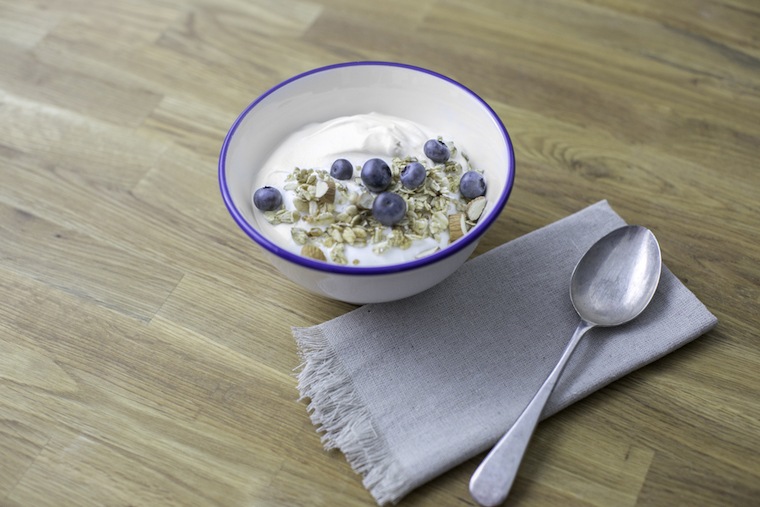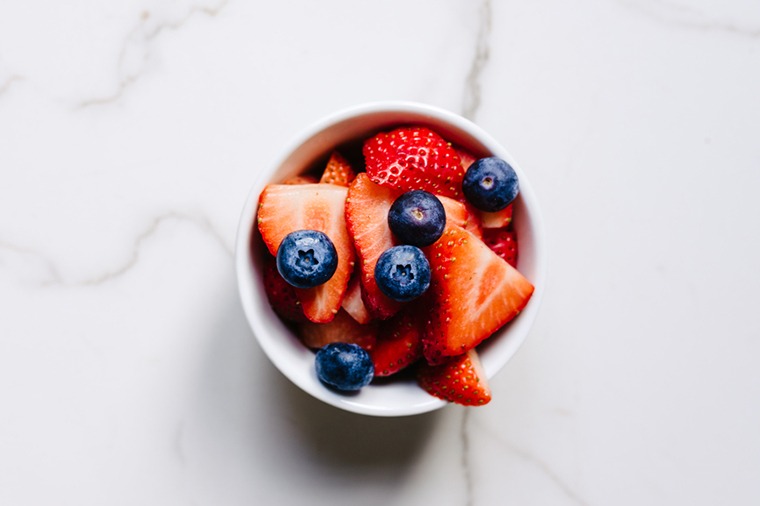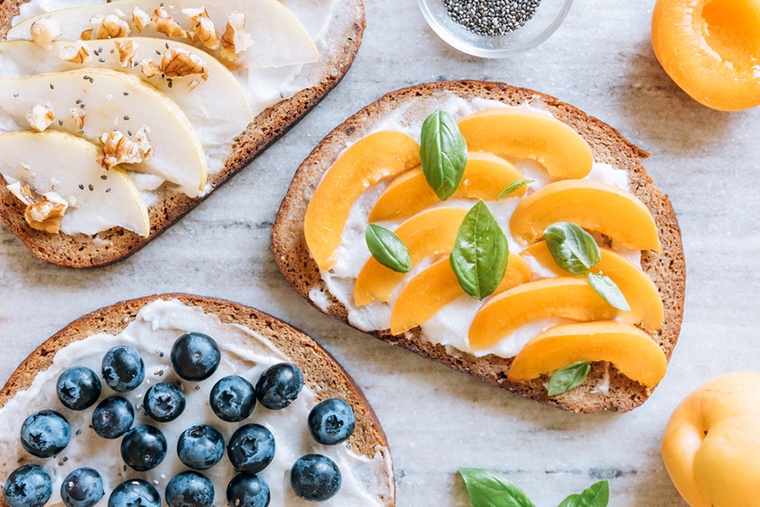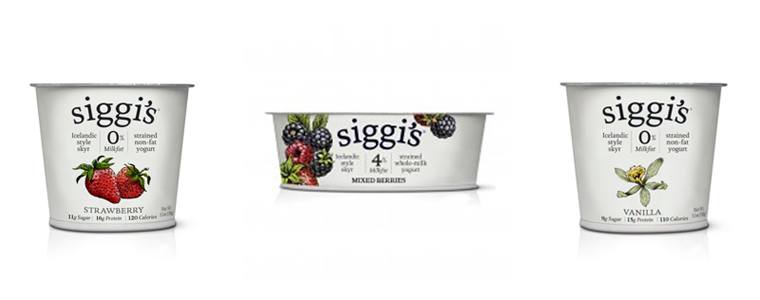5 Things to Look for When Shopping for Snacks With Less Sugar
Still, sometimes plain carrot sticks just won't cut it. So what are the keys to look out for when on the hunt for mindful (and tasty) eats?
One majorly delicious option is in the dairy aisle, where you'll find siggi's yogurt—the brand that's changing the snack game with simple ingredients and less sugar.
Siggi's is so committed to upping the health factor of its protein-packed yogurts that the company added registered dietitian Abigail Kinnear to its rapidly expanding staff to help oversee education and get the word out about the elements that make it a smarter choice.
"What’s helped siggi’s become more popular is this growing awareness...that other yogurts can have so much sugar in them. And that’s why siggi’s shines."
"What’s helped siggi’s become more popular is this growing awareness of what’s in your food, and of sugar, and the fact that other yogurts can have so much sugar in them," Kinnear says. "And that’s why siggi’s kind of shines, because comparatively it’s really good."
Founded 13 years ago by Siggi Hilmarsson, a New York City transplant from Iceland, siggi's authentic Icelandic-style yogurt has always been lower in sugar—putting it years ahead of the currently booming low-sugar trend in food production.
But despite the recent focus on lowering sugar intake, Kinnear has a reminder not to take the trend to the extreme—i.e. trying to sustain a zero-sugar intake or eschewing fruit because of its sugar content.
"I'm a big believer of everything in moderation, so I’m not telling you to totally cut out sugar," Kinnear says. "I think it’s just important to have perspective about what you're putting into your body."
Take that perspective to the grocery store, and scroll down for five dietitian approved tips to make your next snack shopping trip a breeze.

1. Look for a short, simple ingredients list
Kinnear's first piece of advice when you're in the supermarket aisle is to always check out the nutrition label—even on foods you might assume are healthy.
"A lot of the time, especially with processed food, people eat things and don't realize that there's a lot of not only sugar, but different types of fats and things you wouldn't necessarily think would be in there," Kinnear says. "Just look at something like peanut butter, which you’d assume would just be peanuts. But no, there can be sugar, palm oil, and all these other different things in there and you don't know unless you look at the label."
Becoming a prudent label-reader is the easiest way to ID ingredients you want to avoid in excess. Luckily, all of siggi's yogurts have super short ingredients lists, without any add-ins you need to Google to figure out what they are.

2. When in doubt, opt for whole foods
The easiest way to avoid having to decode complicated nutrition panels is to buy foods that don't have them. "Shift toward eating whole, real foods," Kinnear suggests. "So instead of eating something processed, even like a granola bar, maybe reach for a piece of fruit or a vegetable, that you can say, 'Oh this is a piece of broccoli, no label required.'"
But if you do grab a snack that has multiple ingredients, Kinnear stresses that understanding what they are is paramount. "Siggi's really is leaps and bounds ahead in terms of having a very short ingredients list," she notes. "The type of ingredients we put in our yogurt are things you're going to find in your kitchen. In other yogurts you're going to find thickeners, starches, sometimes gelatin, and other stuff you really don't need."

3. Watch out for sugar content
Hilmarsson created his Icelandic yogurts because he was shocked at how much added sugar he was finding in typical options in the U.S. (some of the leading brands contain as much sugar by weight as a can of soda). Opting for less sweet stuff is an efficient way to make sure you're getting all the bang for your buck when it comes to calories.
"If you're talking about refined sugar, it doesn't have much nutritive value. It’s just empty calories really," Kinnear says. "Sugar in fruit obviously comes with things like fiber and nutrients, but refined sugar added to a product doesn't add much nutritive value, it's just going to add extra calories and spike your blood sugar."

4. Go for probiotics
From kombucha to sauerkraut to yes, yogurt, there are plenty of ways to get your daily dose of good bacteria to tap into its digestion-optimizing and immunity-boosting benefits.
Siggi's actually recommends getting your probiotics in food-form, rather than from a supplement, for a more readily available source. A cup of filmjölk (fermented milk) or yogurt with "live and active cultures" listed as an ingredient will put you well within the the range of the recommended 1 billion to 10 billion CFUs a day.

5. Punch it up with protein
Kinnear's go-to rec for healthy snacks is choosing ones that are high in protein (with fats added in as well) to help keep you full between meals, instead of sugary ones that metabolize quickly.
"In terms of the nutrition side, siggi's has more protein than sugar, which I don't think any other yogurt can say," Kinnear says. "It’s usually the other way around, more sugar than protein, but ours is flipped."
And the facts back her up. In the brand's analysis of leading yogurts (between siggi's, Greek yogurt, regular yogurt, and non-dairy yogurt, all in strawberry flavor) siggi's was the only variety with more protein (16 grams) than sugar (11 grams), without using sugar alternatives.
"If you have more protein than sugar, it keeps you fuller for longer," Kinnear says. "And then if you have one of the whole milk varieties of siggi's it also has fat in there, which also helps with satiety. So that’s perfect for an afternoon snack or breakfast."
In partnership with siggi's
Photos: siggi's
Loading More Posts...
